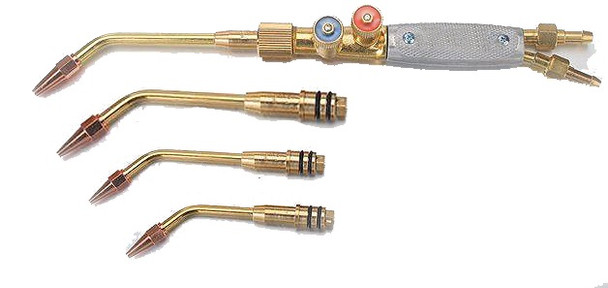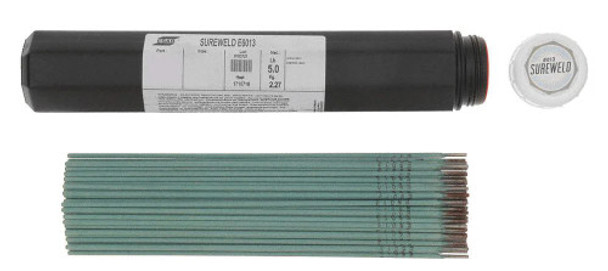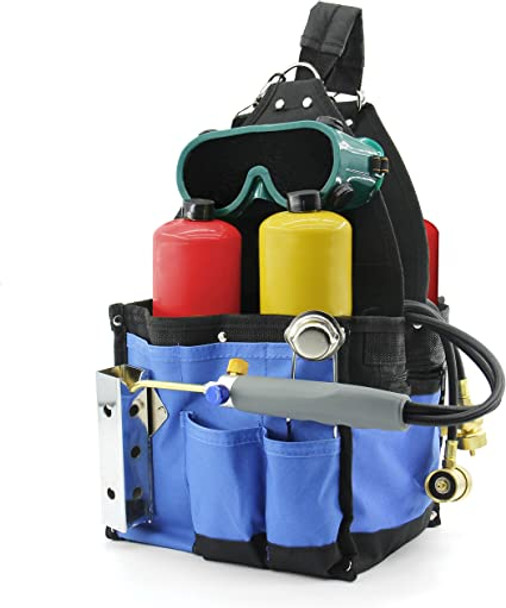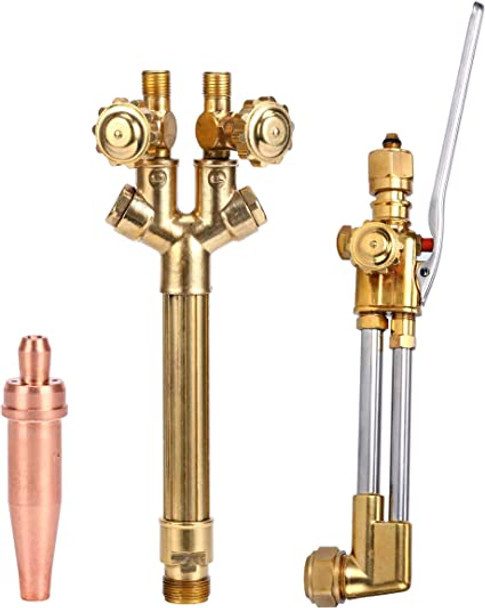How to Avoid Common Welding Mistakes
Key Takeaway
- Prepare the Joint Properly: Clean and fit-up joints carefully to avoid weak welds and ensure strong fusion between metals.
- Select the Right Materials: Use the correct electrode or filler material based on the metal type and welding technique to prevent cracking and weak joints.
- Control Heat Input: Adjust amperage and speed to avoid burn-through, warping, or insufficient penetration for a more consistent weld quality.
Introduction
Welding is a precision skill that requires experience, knowledge, and attention to detail. Common welding mistakes can lead to weak joints, structural failures, and costly repairs, which can compromise both the safety and longevity of projects.
Avoiding common welding mistakes is crucial to creating strong, reliable welds that withstand stress and time. Key mistakes, such as improper joint preparation, incorrect material selection, and inconsistent heat application, can lead to issues like weak bonds, cracking, and porosity. For optimal results, ensure the joint is thoroughly cleaned and fitted correctly to support solid fusion.
Choosing the right electrode or filler material compatible with the base metal is equally essential to prevent brittleness or mismatches. Controlling heat input—by adjusting amperage, speed, and technique—also plays a major role in achieving a consistent weld and avoiding issues like warping or insufficient penetration. Using appropriate shielding gas prevents contamination that can weaken the weld, while positioning yourself and the workpiece correctly ensures stability and precision. By focusing on these best practices, welders can reduce errors and produce high-quality, durable welds.
This guide will help you navigate and overcome these issues to produce high-quality, durable welds.
Gloor Welding Torch
Understanding Common Welding Mistakes
1. Improper Joint Preparation
Joint preparation is the foundation of a solid weld. However, poor preparation often leads to weakened welds, incomplete fusion, and inconsistencies. Typical joint preparation issues include improper fit-up, inadequate cleaning, and incorrect joint design. When contaminants like rust, oil, or dust remain on the metal surface, they prevent the weld from bonding fully, leading to porosity and cracking. Correcting these issues before welding ensures better fusion and helps avoid weak joints.
2. Incorrect Electrode or Filler Material Selection
Choosing the right electrode or filler material is crucial to ensure that the weld will be compatible with the base metals. Using the wrong material can cause brittleness, cracking, and even early weld failure. To match materials accurately, welders must consider factors like metal type, thickness, and the intended application. For example, welding high-strength steel with a low-strength filler may compromise the integrity of the weld, leading to serious safety risks.
3. Inconsistent Heat Application
Proper heat management is essential in welding. When too much heat is applied, it can lead to burn-through, warping, and even material degradation, while insufficient heat may result in weak welds with inadequate penetration. Inconsistent heat application often leads to a poor-quality weld, as it affects the fusion between the materials. To maintain consistent heat, welders should adjust the amperage and speed according to the metal type and thickness, avoiding problems with spatter or incomplete fusion.
4. Inadequate Shielding Gas
Shielding gas protects the weld from atmospheric contamination, such as oxygen, nitrogen, and moisture. An insufficient amount or inappropriate selection of shielding gas can lead to porous, brittle welds that compromise structural strength. Using the correct shielding gas and maintaining the right flow rate prevents contamination, ensuring a clean, solid weld.
5. Poor Welding Positioning
Welding in improper positions often results in weak joints and poor-quality welds. For example, attempting to weld in uncomfortable or unsupported positions can lead to an inconsistent weld path, incomplete fusion, and awkward angles that can weaken the weld. Adopting correct positioning helps welders maintain visibility, control, and accuracy, which are essential for strong welds.
Esab Stick Welding Electrode E6013 Sureweld series
Best Practices for Avoiding Welding Mistakes
1. Proper Joint Preparation
Good joint preparation begins with surface cleaning. Remove rust, oil, and other contaminants, and check the joint design for appropriate fit-up. An accurate fit-up minimizes gaps, promoting a uniform, stable weld. For thicker metals, beveling the edges can help ensure better fusion and penetration.
2. Selecting the Right Materials
The right choice of filler material or electrode will ensure a strong, compatible bond. Start by identifying the base metals, as the filler material should match the metal’s composition and strength. Avoid using dissimilar metals unless necessary, as this can lead to increased brittleness and stress on the weld. Consulting material specifications and guidelines can help you choose the correct materials for the job.
3. Controlling Heat Input
Managing heat input is crucial to achieving consistent weld quality. Adjust the amperage and travel speed to match the material’s thickness and properties. For thinner metals, use lower heat to avoid burn-through. Techniques such as pause and restart, using a lower amperage, or adjusting the angle can prevent overheating and ensure a solid weld.
4. Effective Shielding Gas Usage
Choosing the correct shielding gas based on the welding method and materials used is essential. For instance, argon is commonly used for non-ferrous metals like aluminum, while a mix of argon and carbon dioxide suits mild steel welding. Avoid drafts in the workspace that could disrupt the gas flow, and regularly check gas flow rates to ensure complete protection.
5. Ensuring Optimal Positioning
Take time to set up a comfortable and stable welding position. Secure the workpiece to prevent movement, and position the welding machine at an angle that allows maximum control over the weld path. For complex angles, using a welding positioner or turntable can greatly enhance precision and reduce the risk of welding errors.
Hellog Welding Oxygen MAPP gas Cylinder Torch Kit
Advanced Techniques to Improve Welding Quality
1. Preheating and Post-Weld Heat Treatment (PWHT)
For certain metals, especially those with high carbon content, preheating the workpiece can reduce the risk of cracking. Preheating helps minimize rapid temperature changes, which can cause thermal stress. Post-Weld Heat Treatment (PWHT) is often applied after welding to relieve residual stress and improve the weld's durability and toughness. This is particularly essential for heavy-duty applications in high-stress environments, such as pressure vessels and piping.
2. Non-Destructive Testing (NDT) for Weld Quality Assurance
Non-Destructive Testing (NDT) methods like ultrasonic, radiographic, and magnetic particle testing are invaluable for detecting weld flaws without damaging the workpiece. NDT allows for a detailed assessment of the weld, identifying cracks, voids, and other hidden defects. Regularly testing welds ensures they meet safety and quality standards, particularly in industries like construction and oil and gas, where structural integrity is critical.
3. Using Welding Jigs and Fixtures
Welding jigs and fixtures provide stability and precision, especially for complex or repetitive welds. Jigs hold parts in place, allowing for more consistent welds, while fixtures help keep the correct angles and positioning. These tools can significantly reduce errors in alignment and improve the overall quality of the weld. For large projects or intricate designs, jigs and fixtures are valuable aids in enhancing accuracy.
4. Investing in Proper Training and Certification
Continuous skill development is essential for welding quality. Formal training and certification courses can teach welders advanced techniques, safety protocols, and industry standards. Certification, such as that offered by the American Welding Society (AWS), verifies a welder’s expertise and can increase job opportunities while ensuring high-quality work. Investing in skill development also helps welders keep up with evolving technologies and best practices in the industry.
YAWATA 7018 Arc Welding Electrode
Common Welding Mistakes and How to Fix Them
1. Under-Cutting and Over-Cutting
Under-cutting occurs when the weld metal fails to fill the joint adequately, creating weak points. Over-cutting, on the other hand, results from excessive heat, causing deep grooves beside the weld. To fix these, adjust your travel speed and reduce the heat input to avoid melting too much base metal. Filling undercut areas with additional passes can also help strengthen the weld.
1. Porosity and Cracking
Porosity in welds is often caused by gas contamination, typically due to insufficient shielding gas or dirty surfaces. Cracking can occur from rapid cooling, thermal stress, or incompatible filler materials. To correct porosity, ensure adequate shielding gas coverage and clean the workpiece. For cracking issues, consider using preheating techniques and choosing filler materials that better match the base metals.
2. Inadequate Penetration
Incomplete penetration happens when the weld does not reach the base metal’s root, resulting in a weak bond. This issue often arises from insufficient heat or improper technique. Increasing the amperage or adjusting the weld angle can improve penetration, ensuring that the weld fuses properly with the base metal. In cases of inadequate penetration, multiple passes may be necessary to achieve full fusion.
3. Spatter and Incomplete Fusion
Excessive spatter is often the result of improper settings, such as too high voltage or incorrect shielding gas. Spatter makes the weld look messy and requires extra cleanup. Incomplete fusion occurs when the weld metal does not bond entirely with the base metal, weakening the joint. To fix spatter, adjust voltage and gas flow, and for incomplete fusion, ensure sufficient heat and correct travel speed to promote even melting and bonding.
Heavy Duty Acetylene & Oxygen Cutting Welding Torch/Nozzle
Frequently Asked Questions
1. What’s the easiest way to ensure a clean weld?
To achieve a clean weld, always start by thoroughly cleaning the workpiece. Remove any dirt, grease, rust, or other contaminants. Proper joint preparation, correct settings, and appropriate shielding gas selection further ensure a smooth, quality weld with minimal flaws.
2. How do I know if my shielding gas is enough?
Make sure the gas flow rate is sufficient to protect the weld pool from contaminants. Typically, a flow rate between 15-25 cubic feet per hour (CFH) works well. Monitor the gas flow and avoid drafts that may disrupt the gas coverage, as inadequate shielding gas leads to porosity in the weld.
3. Which materials are most sensitive to heat control?
Metals like aluminum, stainless steel, and high-carbon steel are particularly sensitive to heat. For these materials, managing heat input is crucial to prevent warping, cracking, and burn-through. Techniques like pulse welding and preheating help control temperature for these sensitive metals.
4. How does positioning affect weld quality?
Proper positioning helps ensure control over the weld path and improves visibility and comfort. Welding in an awkward position can result in inconsistent angles, incomplete fusion, and weaker joints. Adjust the position of both the welder and the workpiece to optimize access and stability.
5. Is there a preferred welding method for beginners to reduce mistakes?
MIG (Metal Inert Gas) welding is generally recommended for beginners due to its ease of use and versatility. It allows for easier control, consistent results, and fewer common issues like spatter and porosity, making it a great starting point for those new to welding.
Related Articles
Troubleshooting Common Welding Problems: Expert Tips and Solutions
Beginner's Guide: Basic Welding Techniques and How to Master Them
Conclusion
Avoiding common welding mistakes is essential for producing durable, high-quality welds that meet industry standards. By understanding common pitfalls, preparing joints thoroughly, selecting the correct materials, and employing advanced techniques, welders can significantly improve their weld quality and reduce rework and repair costs. Continuous learning and attention to detail are key to mastering welding and delivering reliable results.
For all your welding supplies, from high-quality filler materials to reliable welding machines and accessories, visit Tikweld Welding Supplies. Whether you’re a beginner or a professional, Tikweld has everything you need to produce safe, effective, and long-lasting welds.













